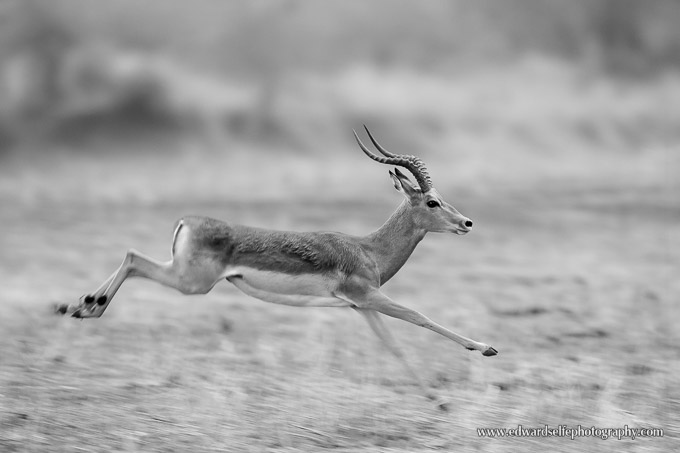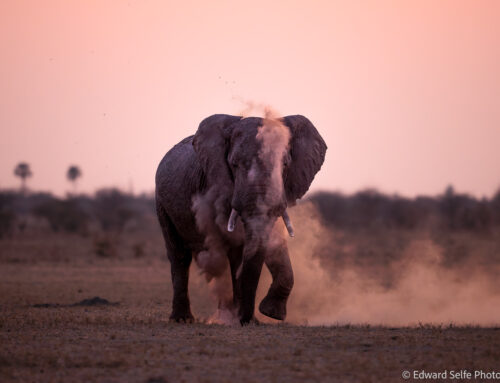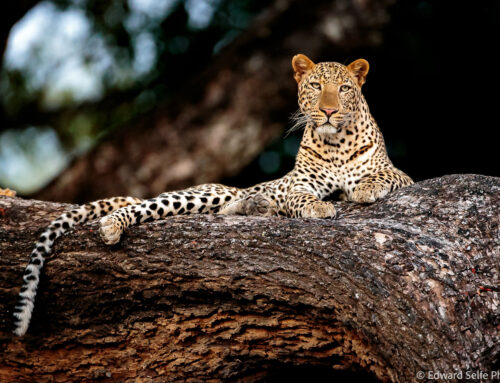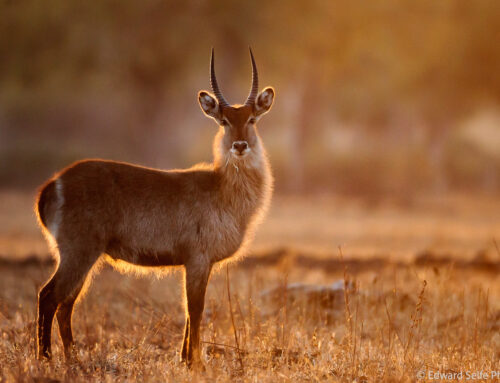Sometimes wildlife photography can be frustrating. Animals don’t behave with us in mind, they just do what nature programmed them to do. Most wildlife enthusiasts understand that, and simply smile when a creature drops its head and walks in the opposite direction from where the photographer wanted!
But when the wildlife is performing, and the light is not, it’s easy to become frustrated! So what options do we have?
If the light is poor, I tend to resort to two different ideas:
- Black and White photography
- Creative photography
I remember a recent afternoon – in the middle of the dry season when the light should have been outstanding – and we were shrouded in heavy grey clouds. The light was flat and boring.
I spotted a line of impalas heading from the bush out into a clearing where they would spend the night. By driving towards the procession of antelope and parking around 50m from them, the individuals at the back began to feel that they were being left behind.
They started to run across us, one-by-one at high speed! With the low light levels, and the poor colour saturation, this was a perfect opportunity for black and white motion shots.
I advised my guests to drop their ISO to give them a slower shutter speed (perhaps between 1/30sec and 1/120sec and pan with the running impalas, taking bursts of images as each antelope passed us.

We all ended up with over 100 shots, but the sullen faces from 10 minutes previously when the clouds came in were replaced with smiles and pleasure at the images they had captured. There are always opportunities on safari; but when the lions are not playing in golden light, you just have to look a little harder to find them!



